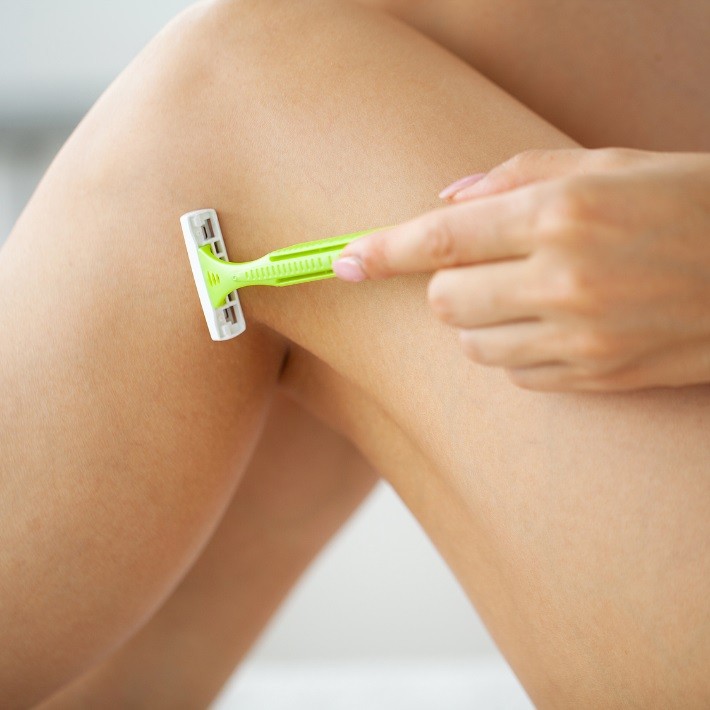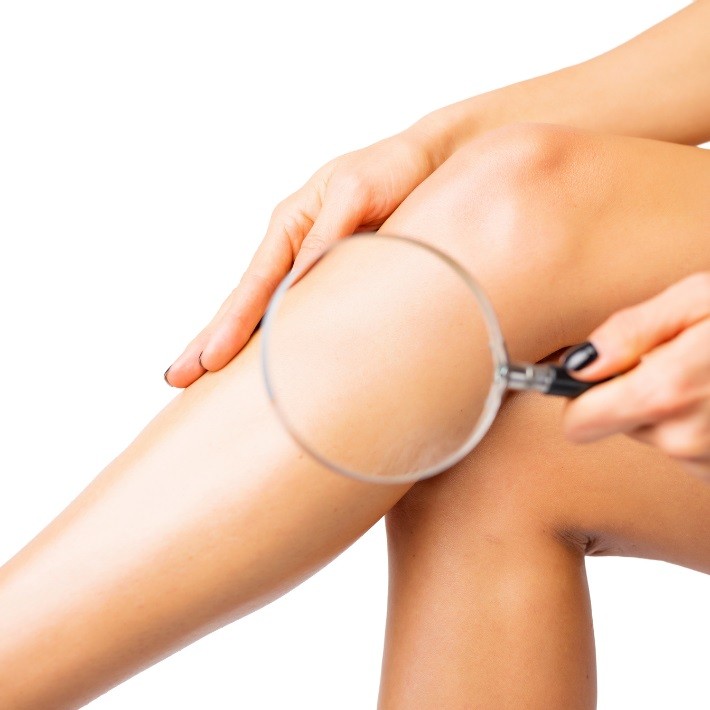Last Updated on March 28, 2025
Leg hair grows fast due to genetic, hormonal, and environmental factors. Leg hair growth rate can vary from person to person based on various factors, such as age, gender, and ethnicity.
Some people may notice comparatively faster leg hair growth than others. Genetics plays a significant role in determining the density, thickness and growth rate of hair follicles. Androgens, a group of hormones, are known to stimulate hair growth in both males and females.
Additionally, frequent shaving and hormonal changes during pregnancy or menopause can cause an increase in leg hair growth. In this article, we will explore the reasons behind the rapid growth of leg hair and the measures that can be taken to control it.
Understanding Leg Hair Growth

Related: How To Grow African American Hair Fast?
Why Does My Leg Hair Grow So Fast?
Have you ever wondered why leg hair seems to grow back so much faster than hair on other parts of the body? Understanding leg hair growth will help you make sense of this phenomenon.
Anatomy Of Hair
Hair is made up of three parts: the follicle, the shaft, and the root. The follicle is the tiny little pocket of skin that surrounds the hair, while the shaft is the visible part of the hair that grows out of the skin.
The root is the part of the hair that is located inside the follicle.
Hair Growth Cycle
All hair strands on the body go through a three-phase growth cycle: anagen, catagen, and telogen. During the anagen phase, which lasts for several years, a new hair strand is actively growing. This is followed by the catagen phase, during which the hair strand stops growing and the follicle begins to shrink.
Finally, the hair strand enters the telogen phase, which lasts for several months. During this time, the hair strand falls out and the follicle rests before it starts the cycle over again.
How Hair Grows In Different Parts Of The Body
Hair growth in different parts of the body is determined by a number of factors, including genetics and hormones. For example, testosterone, the male sex hormone, is responsible for the growth of facial and body hair in men. In women, hormones such as estrogen and progesterone play a role in hair growth.
The rate of hair growth can also vary depending on the location of the body. Some areas, such as the scalp, have a longer anagen phase, which allows hair to grow longer before falling out. In contrast, hair on the legs and other areas of the body has a shorter anagen phase, which results in shorter hair strands that grow back more rapidly.
Understanding the anatomy of hair, the hair growth cycle, and the different factors that influence hair growth in different parts of the body can help you better understand why leg hair seems to grow back so quickly. So, the next time you find yourself reaching for a razor to shave your legs after just a few days, you’ll know why.
Factors Affecting Leg Hair Growth
Why Does My Leg Hair Grow So Fast?
Many of us have wondered why our leg hair grows so fast. Some people may have to shave their legs every other day, while others can go weeks without having to worry about it. The rate at which your leg hair grows is determined by several factors, and understanding them can help you devise a hair removal routine that works best for you.
Therefore, in this blog post, we will discuss the factors affecting leg hair growth, including genetic, hormonal, dietary, and environmental factors.
Genetic Factors
The rate at which your hair grows on your legs is determined by your genes. Just as genetic factors determine the color and texture of your hair, they also influence its rate of growth. Some people have hair that grows faster than others due to their genes.
While you cannot change your genetic makeup, you can embrace your natural pace of hair growth.
Hormonal Factors
Hormonal changes in the body can also affect the rate at which your hair grows on your legs. Androgens, a group of hormones that are predominantly found in males but also exist in females, play a vital role in hair growth.
If there’s an increase in androgens in the body, the rate of hair growth increases along with it. Therefore, women may notice increased hair growth on their legs during pregnancy or menopause due to fluctuations in hormone levels.
Dietary Factors
The health of your hair is influenced by the type of food you eat. A diet lacking in essential nutrients can lead to slower hair growth on your legs and other body parts. Minerals such as zinc, iron, and biotin are essential for hair growth.
Foods rich in these minerals, such as spinach, eggs, and nuts, can help improve the rate at which your leg hair grows. You can also introduce supplements that contain these essential minerals to your diet for better leg hair growth.
Environmental Factors
Environmental factors such as temperature, humidity and other external factors can also affect leg hair growth. During colder seasons, hair growth on the legs can slow down due to vasoconstriction. This is when your body tries to conserve heat by narrowing blood vessels, reducing blood flow to the skin, and hence reducing hair growth.
While during the summer months, when the skin is exposed to more sun, increased melanin in the hair can lead to darker hair growth and a seemingly higher hair growth rate.
Understanding the factors affecting leg hair growth can help you make informed decisions about hair removal methods for your legs. By paying attention to your genetics, hormones, diet and environment, you can maintain healthy hair growth and develop a routine that suits your unique needs.
Related: Does Dirty Hair Grow Faster than Clean Hair?
Managing Leg Hair Growth

If you’re someone who feels annoyed by their leg hair growing back too fast, then you’re not alone. Many people out there are wondering why their leg hair grows back so quickly, even after shaving it just the day before.
Not to worry! This article covers some methods to adopt to manage excessive leg hair growth.
Hair Removal Techniques
To manage excessive leg hair growth, there are several hair removal techniques widely used.
- Shaving: This is the most common method people use to remove leg hair. As it is an inexpensive hair removal technique, all one needs is a razor and shaving cream. However, the drawback is that it can cause razor burns and ingrown hairs, making the skin itchy and uncomfortable.
- Waxing: Another popular method that provides longer-lasting results. Waxing removes the hair from the follicles, which ensures slower regrowth. However, the process can be painful, and there’s a risk of developing ingrown hairs and inflammation.
- Laser hair removal: This method provides the longest-lasting effect. It uses light to destroy the hair follicle, preventing further growth. However, it can be expensive and takes multiple sessions for visible results.
Do Natural Remedies And Hair Inhibitors Work?
There are several natural remedies that might help reduce leg hair growth. However, their effectiveness is still not proven.
- Turmeric and gram flour paste: Applying a mixture of turmeric and gram flour paste is said to reduce hair growth.
- Spearmint tea: Drinking spearmint tea may help inhibit hair growth. It contains anti-androgenic properties that can lower the production of male hormones in women, which is one of the causes of excessive hair growth due to hormonal imbalances.
- Homemade sugar wax: A mixture of sugar, lemon juice, and water heated until it turns into a thick paste is said to act as a natural hair removal wax. However, it can be messy and challenging to work with.
Tips For Managing Excessive Leg Hair Growth
Along with the above hair removal techniques, there are a few tips one can follow to manage leg hair growth.
- Exfoliate your skin before hair removal. It will help remove dead skin cells, making hair removal more comfortable and smoother.
- Apply a warm compress after hair removal to soothe and calm the skin.
- Moisturize your skin regularly to keep it smooth and hydrated, helping to prevent ingrown hairs.
- Avoid using chemical hair removal creams as they can irritate the skin, causing inflammation and allergy.
Managing excessive leg hair growth can be achieved through various hair removal techniques and natural remedies. By following the above tips and methods, you can find a solution that works best for you.
Related: Why Does My Hair Color Fade So Fast?
Frequently Asked Questions On Why Does My Leg Hair Grow So Fast?
Why Does Leg Hair Grow So Fast?
Leg hair appears to grow fast because of a short growth cycle compared to scalp hair.
Can Diet Affect Hair Growth On Legs?
A healthy diet can improve the overall health of hair on the legs leading to slower growth.
How Does Shaving Impact Leg Hair Growth?
Shaving doesn’t affect the hair follicles, so leg hair will grow back at the same speed.
Does Age Affect The Rate Of Leg Hair Growth?
As people age, the rate of leg hair growth slows down due to changes in hormone levels.
Are There Any Ways To Slow Leg Hair Growth?
Laser hair removal, waxing, and depilatory creams are options, but results may vary depending on the individual.
Conclusion
Leg hair growth is a natural process that varies from person to person. Numerous factors contribute to this process, including genetics, hormones, and age. Although leg hair growth rate might not be a topic of much concern, it’s still an area of interest for some people.
From this blog post, it’s clear that hair growth on legs is different for everyone. Nevertheless, if you want to slow down this process, you can try various hair removal options. However, it’s absolutely okay to let nature take its course and embrace hair growth as a natural part of your body.
Regardless of your choice, the most important thing is to feel comfortable in your own skin. Therefore, we encourage you to appreciate your unique bodily qualities and feel confident in your own skin!

